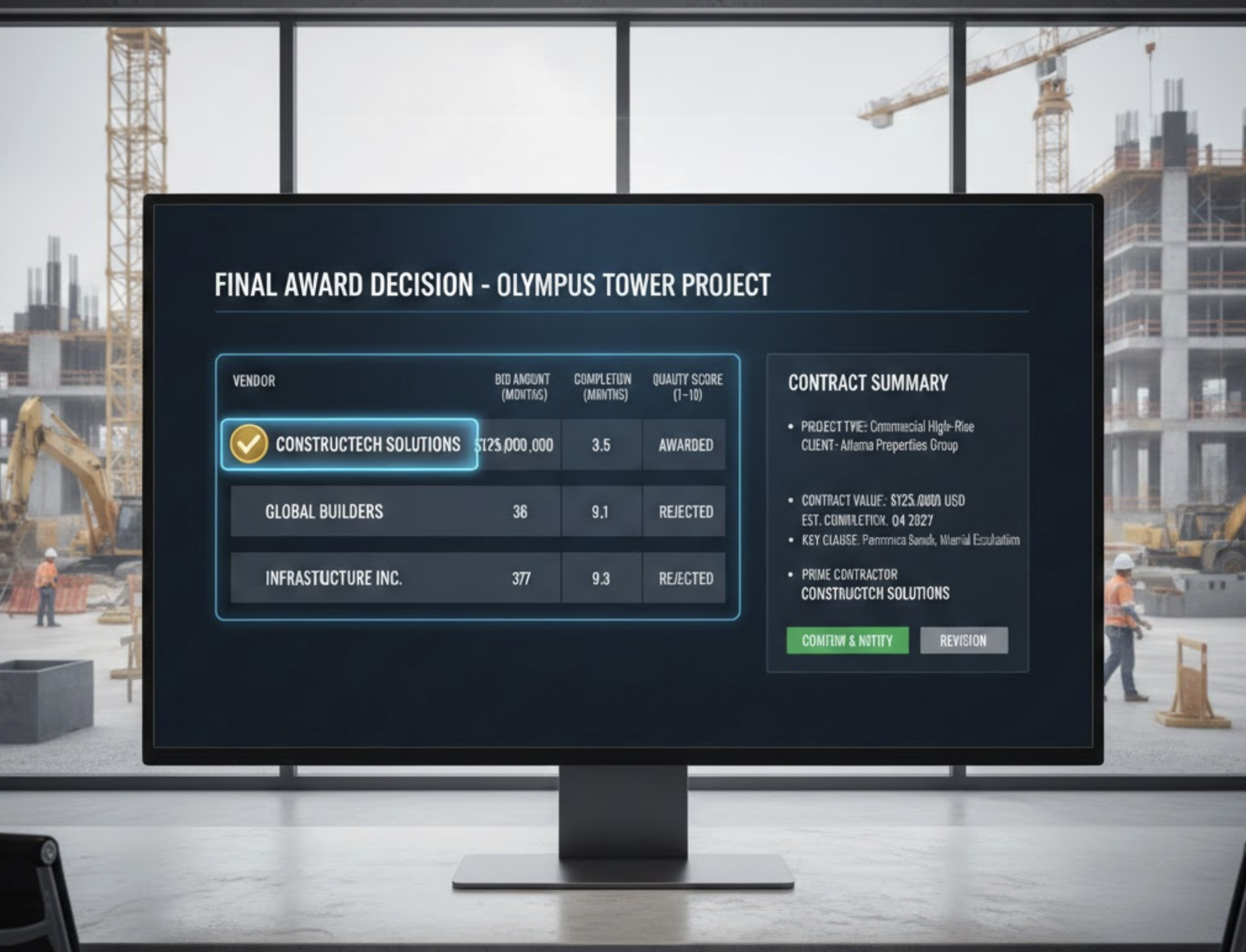Managing Contractual Risk in Design-Build Projects
In today’s evolving construction industry, managing contractual risks in design-build projects is crucial. As construction project management software continues to advance, understanding the nuances of risk allocation, the types of risks involved, and the mitigation strategies available can drastically improve project outcomes. This blog post explores these aspects, offering insights into how to effectively manage potential pitfalls using innovative tools like Zepth.
Key Concepts of Design-Build Contracts
Design-build projects stand out due to their unified contract structure, one merging design and construction responsibilities into a seamless workflow. This unified approach not only simplifies project management but also reduces the risk burden on project owners. Enhanced communication and collaboration between the owner and the design-build entity can lead to improved project performance and a more streamlined execution process.
Understanding Risk Allocation
One of the standout features of design-build contracts is their effective distribution of potential risks. By clearly defining which party is responsible for specific risks associated with design, constructability, and unforeseen site conditions, these contracts facilitate better risk management practices. This allocation often shifts many liabilities from the owner to the design-build entity, reducing stress on the project owner and enhancing overall project delivery.
Types of Risks in Design-Build Projects
Contractual Risks
Contractual risks in design-build projects are issues stemming from agreements among involved parties. Misunderstandings regarding project specifications, scope changes, and disputes over responsibilities can lead to delays and financial repercussions. Effective management of these risks is vital to ensuring that the project timeline and budget remain intact.
Design Risks
Under design-build contracts, contractors assume full responsibility for design defects, errors, and omissions. These risks pose significant threats to the project’s smooth execution, often resulting in financial implications and project delays. The importance of procuring appropriate insurance, such as errors and omissions insurance, cannot be overstated, as it mitigates the ramifications of potential design flaws.
Site Conditions Risks
Site conditions risks are related to unforeseen factors that can arise during construction. Whether due to environmental challenges or hidden site conditions, these risks can complicate project management. Clear and precise contract language, combined with appropriate risk allocation provisions, is essential for addressing these concerns effectively.
Mitigation Strategies for Contractual Risks
To alleviate the risks associated with design-build projects, employing effective strategies is key. Here are some of the most critical mitigation measures:
- Construction Project Management Software: Implement software tools like Zepth’s construction project management software to streamline project management processes. Early identification of potential risks, facilitated communication among stakeholders, and enhanced oversight can lead to effective risk mitigation.
- Clear Contract Language: Contracts must be carefully crafted, with comprehensive details clearly delineated. This includes precise specifications, comprehensive scope definitions, and thorough allocations of responsibility to prevent misunderstandings and disputes.
- Insurance Coverage: Acquiring appropriate insurance, including errors and omissions coverage, is critical for protecting against design liability and other potential pitfalls throughout the project lifecycle.
- Adherence to Documentation Guidelines: Strict adherence to contract and documentation standards minimizes risks and increases the likelihood of successful outcomes in design-build projects.
The Role of Zepth in Risk Management
Zepth plays a pivotal role in managing contractual risks in construction through its comprehensive software solutions. By providing a unified platform for project management, Zepth enhances communication, streamlines responsibilities, and allows for early identification of potential risks throughout the project lifecycle. These features help not only to enhance project outcomes but also to minimize the chance of contractual disputes and unforeseen problems.
Additionally, Zepth offers a variety of tools beneficial for effective risk management. From risk allocation to contract management and compliance tracking, Zepth’s features are designed to optimize the processes, ensuring that project managers can focus on successful delivery.
Best Practices for Managing Contractual Risks
Implementing best practices is essential to fostering a successful design-build initiative:
- Unified Communication: Establish a culture of holistic communication among all project stakeholders. By leveraging a centralized platform for project information, misunderstandings and related risks can be significantly reduced.
- Regular Risk Assessments: Conducting routine risk assessments and reviews facilitates early identification and remediation of potential risks, preventing them from escalating into more serious issues.
- Clear Project Scope: Clearly defining the project scope at the beginning of the project ensures that all parties are aligned and aware of their responsibilities, which helps minimize alterations to the scope and any disputes arising from them.
Emerging Innovations in Construction Management
As the construction landscape continues to evolve, emerging innovations are enhancing risk management practices. Advanced project management software utilizing AI and machine learning capabilities can proactively identify and manage risks, making the project management process more efficient. Furthermore, integrated design and construction tools offer real-time updates and improve collaboration between different teams, paving the way for enhanced coordination and reduced risks.
In conclusion, effectively managing contractual risks in design-build projects requires a comprehensive understanding of risk types, allocation strategies, and mitigation practices. By leveraging advanced tools like Zepth’s construction project management software, stakeholders can streamline their processes, enhance communication, and ultimately achieve successful project outcomes while navigating the complexities of risk management. For more information on managing contractual risks in design-build projects, explore Zepth’s resources today.




